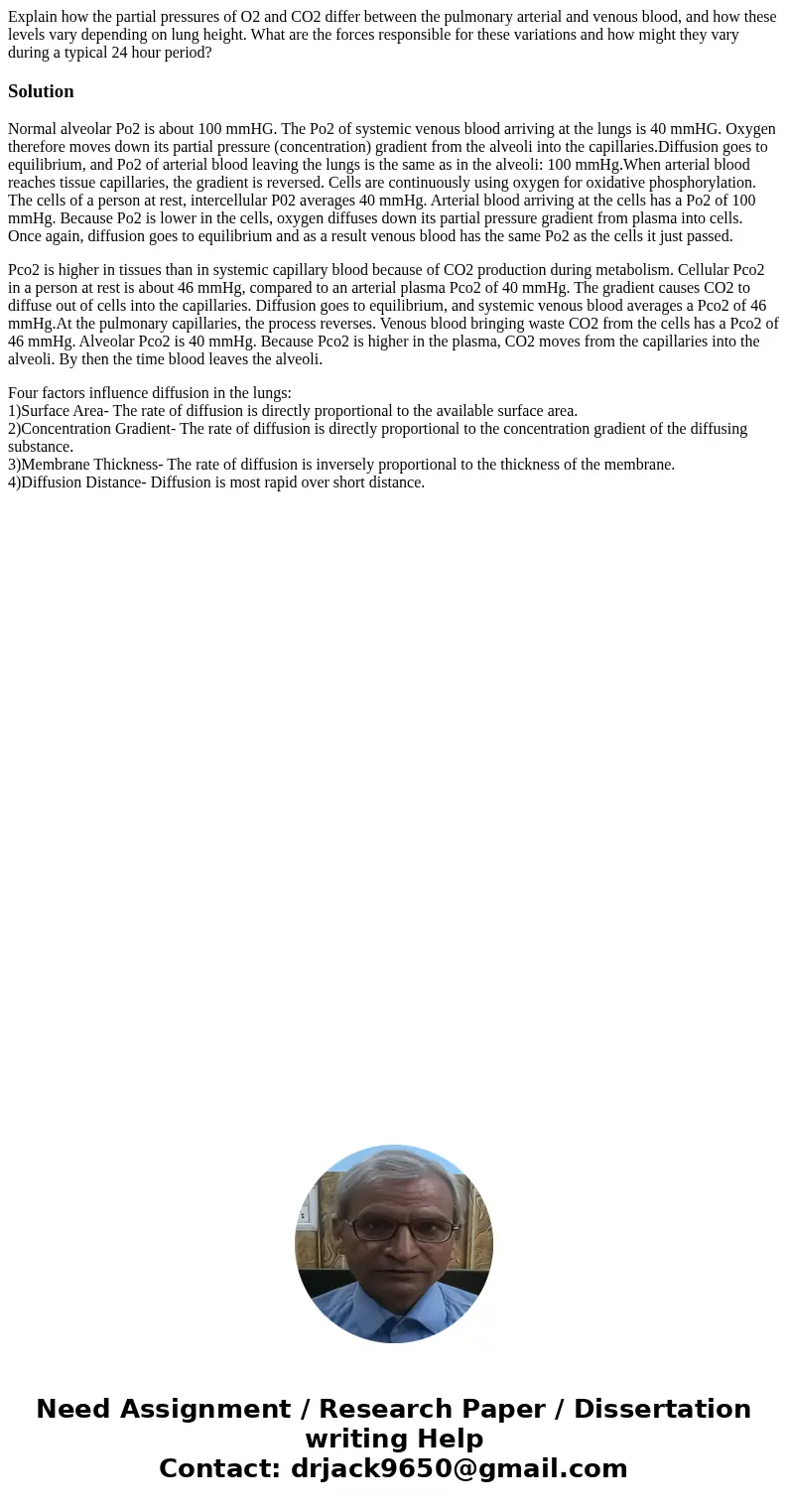Explain how the partial pressures of O2 and CO2 differ betwe
Explain how the partial pressures of O2 and CO2 differ between the pulmonary arterial and venous blood, and how these levels vary depending on lung height. What are the forces responsible for these variations and how might they vary during a typical 24 hour period?
Solution
Normal alveolar Po2 is about 100 mmHG. The Po2 of systemic venous blood arriving at the lungs is 40 mmHG. Oxygen therefore moves down its partial pressure (concentration) gradient from the alveoli into the capillaries.Diffusion goes to equilibrium, and Po2 of arterial blood leaving the lungs is the same as in the alveoli: 100 mmHg.When arterial blood reaches tissue capillaries, the gradient is reversed. Cells are continuously using oxygen for oxidative phosphorylation. The cells of a person at rest, intercellular P02 averages 40 mmHg. Arterial blood arriving at the cells has a Po2 of 100 mmHg. Because Po2 is lower in the cells, oxygen diffuses down its partial pressure gradient from plasma into cells. Once again, diffusion goes to equilibrium and as a result venous blood has the same Po2 as the cells it just passed.
Pco2 is higher in tissues than in systemic capillary blood because of CO2 production during metabolism. Cellular Pco2 in a person at rest is about 46 mmHg, compared to an arterial plasma Pco2 of 40 mmHg. The gradient causes CO2 to diffuse out of cells into the capillaries. Diffusion goes to equilibrium, and systemic venous blood averages a Pco2 of 46 mmHg.At the pulmonary capillaries, the process reverses. Venous blood bringing waste CO2 from the cells has a Pco2 of 46 mmHg. Alveolar Pco2 is 40 mmHg. Because Pco2 is higher in the plasma, CO2 moves from the capillaries into the alveoli. By then the time blood leaves the alveoli.
Four factors influence diffusion in the lungs:
1)Surface Area- The rate of diffusion is directly proportional to the available surface area.
2)Concentration Gradient- The rate of diffusion is directly proportional to the concentration gradient of the diffusing substance.
3)Membrane Thickness- The rate of diffusion is inversely proportional to the thickness of the membrane.
4)Diffusion Distance- Diffusion is most rapid over short distance.

 Homework Sourse
Homework Sourse